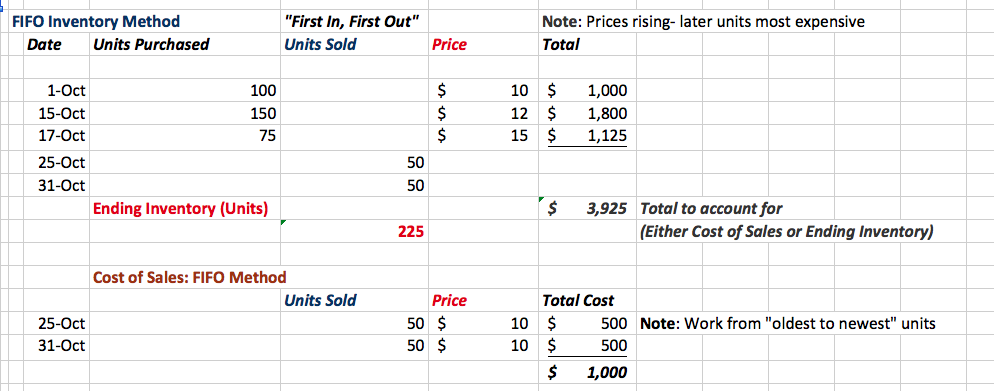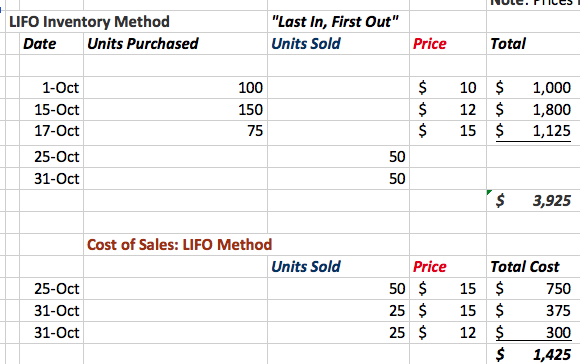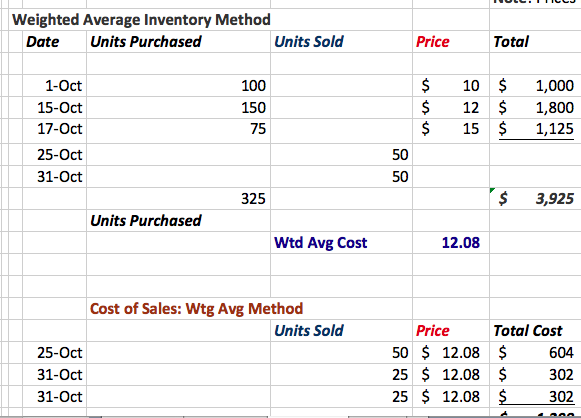3 Little-Known Facts About Inventory Valuation Methods (3 Video Links)
Inventory is often the largest account balance in the balance sheet, and accountants must get inventory valuation right.
If you’re studying for the CPA exam, taking an undergraduate accounting course- or managing a business- this concept can be difficult.
What is inventory valuation?
When you add an item to inventory, you need a method to figure out the cost of the item. The cost of each item determines the cost of good sold, and the impact on net income when the item sold.
The method you choose has a big impact on your company profit or loss.
Accountants use several methods to value inventory, and the three most popular are First-in, first out (FIFO), Last-in, first-out (LIFO) and Weighted average.
Factors that stay the same
Several factors stay the same, regardless of the method you choose. To explain, check out this screenshot from my FIFO video explanation:
The total cost ($3,925), units purchased (325), the units sold (100) and the items in ending inventory (225) are the same for any inventory method. What’s different is the value placed on each item.
FIFO assumes that the oldest (usually cheapest) units are sold first. In this case, 100 units are sold at $10 per unit.
Here’s the LIFO method video screenshot:
LIFO assumes that the newest (usually more expensive) units are sold first. In this case, units at $12 and $15.
Finally, here’s the Weighted average method video screenshot:
This method computes a cost per units as: ($3,925 total cost) / (325 units) = $12.08. The same cost is assigned to all units.
Use the video links to learn more about these concepts, and to study for the CPA exam.
For live CPA exam prep classes, join Conference Room for free. Members will be notified of course dates, times, costs, and how to attend these courses.
Attend these courses and get help to pass the CPA exam, or to study for accounting topics.
Go to Accounting Accidentally for 300+ blog posts and 400+ You Tube videos on accounting and finance.
Good luck!
Ken Boyd
Author: Cost Accounting for Dummies, Accounting All-In-One for Dummies, The CPA Exam for Dummies and 1,001 Accounting Questions for Dummies
(email) ken@stltest.net
(website and blog) https://www.accountingaccidentally.com/




